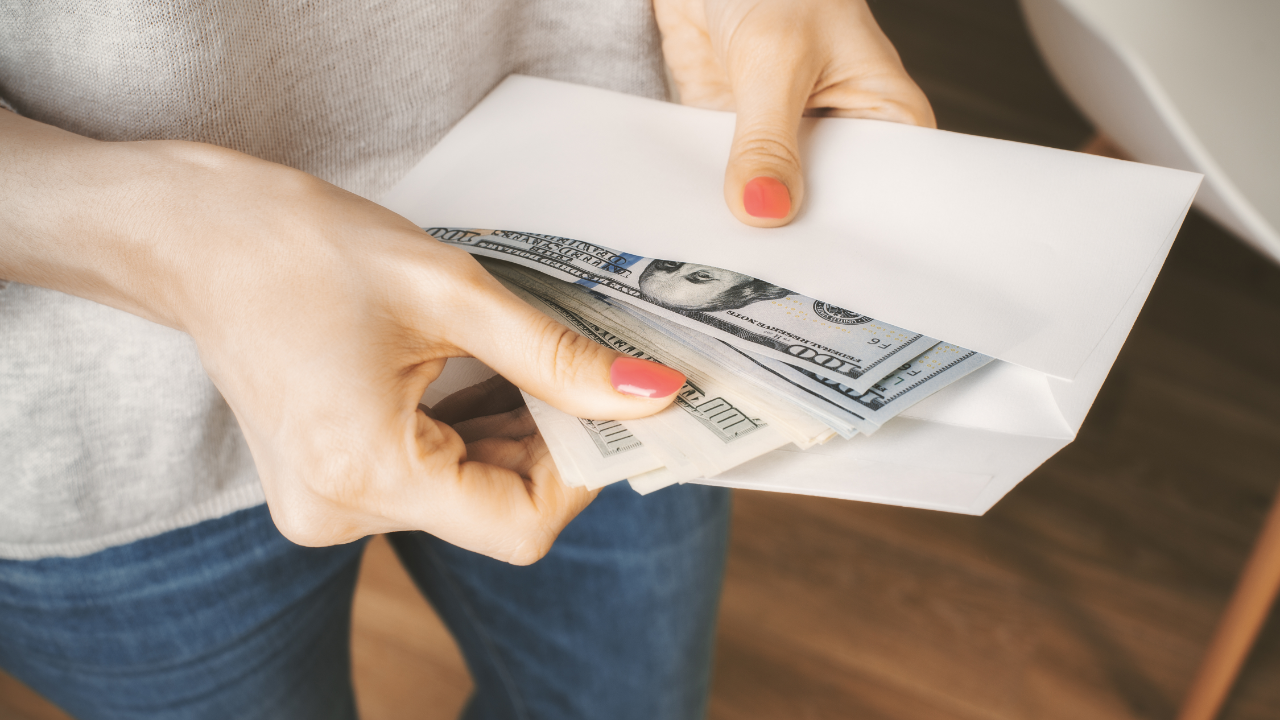This one money habit will get you out of living paycheck to paycheck

Living paycheck to paycheck isn’t just exhausting and stressful — it’s expensive. With inflation sticking around and new tariffs projected to cost American households up to $3,800 in 2025 (according to Yale’s Budget Lab), it’s more important than ever to build breathing room into your money plan to avoid late payment fees or borrowing to make it to payday.
There’s one simple but powerful habit I use to break this cycle: I have built and maintained a cash-flow cushion.
Not to be confused with a traditional emergency fund, this habit helped me pay off $300,000 in debt in three years. Crucially, I stopped feeling like I was just one late paycheck away from financial chaos.
The cost of always playing catch-up
Living paycheck to paycheck creates a vicious cycle — one that costs more than just money.
Financially, it means you’re more likely to rack up late fees and overdraft charges. Plus, you’ll miss out on wealth-building opportunities because you’re unable to buy quickly or plan ahead.
Emotionally, living this way kept me in a constant state of anxiety. Before I started my cash-flow cushion, I wasn’t thinking about saving, investing or building wealth — I was just thinking about my bills, my mounting debt and how to make it to Friday.
But living paycheck to paycheck isn’t just something that people with lower incomes deal with. According to Bankrate’s Living Paycheck to Paycheck Survey, 24 percent of American workers earning six figures or more said they still live paycheck to paycheck. Even when I started making a good salary, I somehow still found myself spending right up to the edge of my paycheck every month, always one unexpected bill away from falling behind.
Keep in mind: That kind of pressure affects your relationships, erodes your mental health and creates fear of your financial future, rather than optimism.
Your secret weapon: A cash-flow cushion
You know that feeling when your car is low on gas, and you worry that you won’t make it to the next gas station in time? That’s the kind of anxiety I feel when my checking account balance is less than the amount of my monthly bills.
Think of your cash-flow cushion as always driving with a full tank of gas.
Building a cash-flow cushion means keeping at least one month’s worth of essential expenses as the baseline level in your everyday checking account. Not your emergency fund or a separate savings account, but in the account from which your bills are paid.
Money tip: This gives you a 30-day head start on your monthly budget. Instead of waiting for your next paycheck to cover your bills, you know they’re already covered.
With prices rising on everything from groceries and clothing to cars, a cash-flow cushion offers an extra buffer. You’re no longer reacting to every price hike — you’ve got time to create a plan if you see your bills creeping up because of higher prices, even if your spending habits haven’t shifted.
And when tariffs drive up prices, as they’re projected to in the coming year, you won’t be stuck scrambling to make the math work on your monthly budget.
How to start your own cash-flow cushion
If you don’t already have enough cash in your checking account to cover a full month’s worth of expenses, here’s how to build it:
- Know your cash-flow cushion number. Add up your essential monthly bills from last month, including housing, utilities, food, transportation and health expenses. Of course, everyone’s expenses vary from month to month, but it’s better to use last month as your closest benchmark than to engage in analysis paralysis.
- Start small and start now. Redirect extra income and refunds to build the fund, or temporarily cut back on one non-essential expense. You may push pause on other savings goals, cut subscriptions or live lean for a few months as you create this financial buffer. If you’re paid biweekly, you might direct extra funds toward your cushion in those three-paycheck months.
- Keep it in your everyday checking account. I sold unused furniture and clothes to kick off my first cushion, depositing that money into my checking account. The goal is to be one month ahead, so you’re not stuck waiting for your next deposit to pay bills. Ensure that recurring bills and necessary expenses are paid from this checking account to simplify tracking.
- Set an alert if your balance drops below this threshold. Most online banks will send an email or text alert if your account balance drops below your predetermined amount. For example, if your regular monthly expenses total $5,000, you can create an alert to notify you when your balance falls below that amount. Building, maintaining and monitoring your cash cushion can help you avoid old patterns of spending the funds in your checking account down to zero.
- Replenish the account regularly. Building a healthy cushion won’t mean much if you don’t maintain it. With each paycheck, prioritize adding funds to your cushion until it’s above your monthly threshold again. Anything left over can be funneled into your emergency fund, toward other savings goals or into an investment.
How this habit can impact your mental health
According to Bankrate’s 2025 Money and Mental Health survey, 43 percent of American adults say that money has a negative impact on their mental health. And respondents who reported feeling these negative effects were three times more likely to have paid a bill late, compared to those who said that money doesn’t impact their mental health.
But it doesn’t have to be this way. Building a cash-flow cushion isn’t just a win for your money goals — it’s a major upgrade to your financial peace of mind. When your bills are already covered, your brain stops living in fight-or-flight mode. You make more responsible money choices. You can plan instead of panic.
I recently received this email from a client:
“I made sure to keep $2,000 in my checking account as a minimum balance, and now don’t feel like I am ever living paycheck to paycheck or unnecessarily stressed about money. A small action, I know, but it has had a big impact.”— client email
Final thoughts: Set yourself up for success (and peace)
Financial security during economic uncertainty isn’t just about how much you save. It’s about the space you can create between when your bills are due and when your paycheck arrives.
Let your cash-flow cushion be the start of that space.
Building a one-month cushion in your checking account may not be flashy. It hasn’t gone viral on my social media (yet). But it’s what works for me, and for the people I coach. It’s how you can stop the stress, start seeing your money differently and build real wealth — one paycheck ahead.
Bankrate's Expert Contributors
Our Expert Contributors are a select group of creators, experts and thought leaders who share first-person perspectives on finance and its intersections with our lives.
Meet our expertsYou may also like

7 simple ways to build good money habits

Cash stuffing: How this trendy budgeting method works




